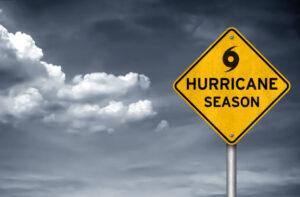Hurricane Season Preparedness:
Protecting Your Home in the Northeast
 When most people think of hurricane damage, they picture Florida or the Gulf Coast. But here in the Northeast, we’re no strangers to the high winds, torrential rains, and flooding that come with late-summer and fall storms. Hurricane season officially runs June 1 through November 30, and while direct hits are rare, the remnants of tropical storms can cause severe damage to homes and properties in our region.
When most people think of hurricane damage, they picture Florida or the Gulf Coast. But here in the Northeast, we’re no strangers to the high winds, torrential rains, and flooding that come with late-summer and fall storms. Hurricane season officially runs June 1 through November 30, and while direct hits are rare, the remnants of tropical storms can cause severe damage to homes and properties in our region.
Taking the right steps now can protect your family, your property, and your peace of mind.
1 – Secure the Exterior of your Home
Strong winds and heavy rain can turn loose items into projectiles.
- Trim or remove dead trees and branches that could fall.
- Bring in outdoor furniture, grills, and decorations.
- Secure sheds, fences, and other structures.
- Check your roof for missing or damaged shingles and repair them promptly.
2 – Protect Against Flooding
Even if you’re inland, hurricanes can cause intense rainfall that leads to flash flooding.
- Clean gutters and downspouts so water can flow away from your home.
- Test sump pumps and consider a battery backup system.
- Seal cracks in your foundation.
- Move valuables and electrical items off basement floors.
3 – Safeguard Your Windows and Doors
Wind-driven rain can seep in through the smallest gaps.
- Install storm shutters or have plywood ready to cover windows.
- Check weatherstripping and door seals.
- Reinforce garage doors, which can be a major entry point for wind.
4 – Prepare an Emergency Kit
If the power goes out or you’re temporarily unable to leave your home, you’ll need supplies on hand. Include:
- Flashlights and extra batteries
- Bottled water (one gallon per person per day for at least 3 days)
- Non-perishable food
- First aid kit and necessary medications
- Cell phone chargers and a battery bank
- Important documents in a waterproof container
5 – Review Your Insurance Coverage
Many standard homeowners’ policies do not cover flood damage. Contact your insurance company to review your coverage and consider adding flood insurance if you’re in a high-risk area. Keep policy numbers and contact information accessible.
6 – Have a Post-Storm Plan
After the storm passes, safety comes first:
- Stay away from downed power lines and floodwaters.
- Document any damage with photos and videos.
- Contact your insurance provider immediately.
- Call a trusted restoration company, like MacFawn Fire & Flood Restoration, to handle water extraction, structural drying, and repairs. Acting fast can prevent further damage from mold or structural issues.
Be Ready Before the Winds Pick Up
Hurricanes and tropical storms may be unpredictable, but your preparedness doesn’t have to be. By securing your home, reviewing your coverage, and having a plan in place, you can weather the season with greater confidence.

